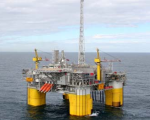Pioneer Natural Resources is tripling drilling in shale fields as international energy explorers five times its size recoil from losses on the U.S. oil renaissance.
Pioneer is expanding its fleet of drilling rigs in the northern part of Texas’ Spraberry field to 16 from five this quarter after striking reservoirs so rich that some wells are expected to pump as much as 1 MMbbl of crude during their lifespans. Pioneer’s wildcatting bucks the trend among bigger explorers including Royal Dutch Shell Plc that are writing down U.S. shale assets and shrinking their footprints after drilling money-losing wells.
Pioneer plans to double crude and natural gas output by the end of 2018 by exploiting deep layers of shale beneath a Texas oilfield that has been in production for more than six decades. Pioneer amassed those assets in the 1990s from international companies that didn’t foresee the shale-drilling revolution and were fleeing what they regarded as a withering oil province in favor of the Gulf of Mexico and Africa.
“The technology changed,” Timothy Dove, Pioneer’s president and COO, said in a telephone interview on March 7. “What we’re doing is going back into a large, already-discovered oilfield.”
Pioneer has risen 6.5% this year after surging 73% in 2013 as production climbed to an eight-year high and Texas crude prices averaged above $90 a barrel.
International explorers who were late to the land rush for U.S. shale fields during the past decade haven’t been able to mimic Pioneer’s success.
For Shell, the world’s second-largest oil producer by market value, the dwindling value of its U.S. shale prospects contributed to a $2.7 billion writedown of its oil and gas portfolio announced in January.
The Hague-based company said it would scale back drilling in those fields because of disappointing results. Shell’s global output dropped 1.9% last year to the lowest since 2009, according to data compiled by Bloomberg.
BP Plc announced a restructuring of its onshore U.S. business last week to improve results. That was after the London-based company’s global, full-year 2013 production tumbled 32% to the smallest in at least 15 years.
Energy companies also are contending with soaring costs for everything from rig crews to the sand used in mixtures that fracture oil-soaked rocks deep underground, industry executives including Chevron Corp. Chairman and CEO John Watson said during the IHS CERAWeek conference in Houston last week.
Escalating costs are creating a “squeeze” on the biggest oil producers that is eroding profitability, Watson said.
Pioneer’s lack of exposure to the costliest and riskiest international projects, such as LNG complexes and ultra-deepwater oil platforms, shields it from some of the pressures impacting larger peers. Pioneer’s cost to extract the equivalent of a barrel of crude declined 4.8% during the final three months of 2013 to $13.36.
Pioneer is spending about $8 million a well to drill sideways through the Spraberry field, Dove said. Some of those wells probably will gush 1 MMbbl or more before they peter out decades from now, according to a presentation published on the Irving, Texas-based company’s website on March 7.
Those wells cost four times as much as traditional, $2 million vertical wells that typically yield 140,000 to 170,000 bbl over their lifetimes, Dove said. The higher costs and risks of drilling horizontally are justified because the return on each dollar invested is so much greater, he said.
At an oil price of $95 a barrel, an $8 million, million-barrel well would yield an average of $11.88 for each $1 of initial investment, based on Bloomberg calculations. That’s 61% above the $7.36 earned per dollar spent at the midpoint production estimate for the $2 million vertical well.
Pioneer plans to drill 250 horizontal wells in the Spraberry and other nearby fields in the Permian basin that straddles the Texas-New Mexico border, Dove said. That’s in addition to 200 vertical wells planned for the area in 2013.
Pioneer is selling fields in Alaska and the Barnett shale in north Texas after quitting African exploration in 2011 and 2012 to focus on its most-promising domestic prospects.
In its 2013 annual report, Pioneer identified the Spraberry field and the Eagle Ford shale in the southern part of the state as its main growth areas. The company also produces oil, gas and byproducts such as propane in Kansas, Colorado and the Texas panhandle.
Providing useful resources, articles and writings on crude oil, other petroleum products, energy and gas. By O'Niel Petroserve Nigeria Ltd, online.

 O'NielPetroserve is a leader in the of Nigerian Bonny Light Crude Oil (BLCO) sales market. As a privately held company, O'Neil Petroserve is committed to and is focused on delivering reliable services to all her clients.
O'NielPetroserve is a leader in the of Nigerian Bonny Light Crude Oil (BLCO) sales market. As a privately held company, O'Neil Petroserve is committed to and is focused on delivering reliable services to all her clients.  O'Neil Petroserve has an excellent track record of reliability in the supply of Bonny light crude oil, BLCO. We protect our buyers with 2% Performance Bond while we also expect protection from our customers with bank instrument from the world's top banks. We deliver on TTO, TTT, CIF and FOB basis.
O'Neil Petroserve has an excellent track record of reliability in the supply of Bonny light crude oil, BLCO. We protect our buyers with 2% Performance Bond while we also expect protection from our customers with bank instrument from the world's top banks. We deliver on TTO, TTT, CIF and FOB basis.
